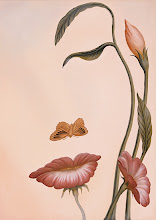Malpighi was born in Crevalcore near Bologna in Italy, raised on the farm his parents owned and entered the University of Bologna at the age of 17. Malpighi began to study. When his father, mother and paternal grandmother died, he had to abandon his studies for more than two years to settle family affairs. He returned to university after two years, and became a doctor of medicine in 1653. The next year he married Francesca Massari, younger sister of his anatomy professor. She died a year later.
In 1656 Malpighi received a chair of medical practice in the university, three years after he had applied for it, and later the same year University of Pisa created a chair of theoretical medicine for him. He stayed in Pisa for three years and then returned to Bologna. In 1661 he was called to University of Messina where he stayed for four years.
Most of Malpighi's research results were published as articles in the journal of the Royal Society of England. His first article appeared there in 1661 and was about anatomy of a lung of a frog during which he had discovered capillaries. In 1667 Henry Oldenburg invited Malpighi to correspond with the Royal Society regularly and he became a fellow the next year, the first such recognition given to an Italian.
Malpighi used the microscope for studies on skin, kidney, and for the first interspecies comparison of the liver. He greatly extended the science of embryology. The use of microscopes enabled him to describe the development of the chick in its egg, and discovered that insects (particularly, the silk worm) do not use lungs to breathe, but small holes in their skin called tracheae. Later he falsely concluded that plants had similar tubules. However, he observed that when a ringlike portion of bark was removed on a trunk a swelling of the tissues would occur above the ring. He correctly interpreted this as growth stimulated by food coming down from the leaves, and being blocked above the ring. He was the first to see capillaries and discovered the link between arteries and veins that had eluded William Harvey.
Malpighi is regarded as the founder of microscopic anatomy and the first histologist. Many microscopic anatomical structures are named after him, including a skin layer (Malpighi layer) and two different Malpighian corpuscles in the kidneys and the spleen, as well as the Malpighian tubules in the excretory system of insects.
He also studied chick embryo development with detailed drawings and discovered taste buds of human tongue. Some of his studies he made by vivisection. He also studied the anatomy of a brain and concluded that this organ is a gland. In terms of modern endocrinology this deduction is correct because neurotransmitter substances represent paracrine hormones, and the hypothalamus of the brain has long been recognized for its hormone-secreting capacity. He was also among the first to study human fingerprints.
In 1691 Pope Innocent XII invited him to Rome as Papal physician. He taught medicine in the Papal Medical School and wrote a long treatise about his studies which he donated to the Royal Society of London.
Marcello Malpighi died of apoplexy in Rome on September 30, 1694


No comments:
Post a Comment